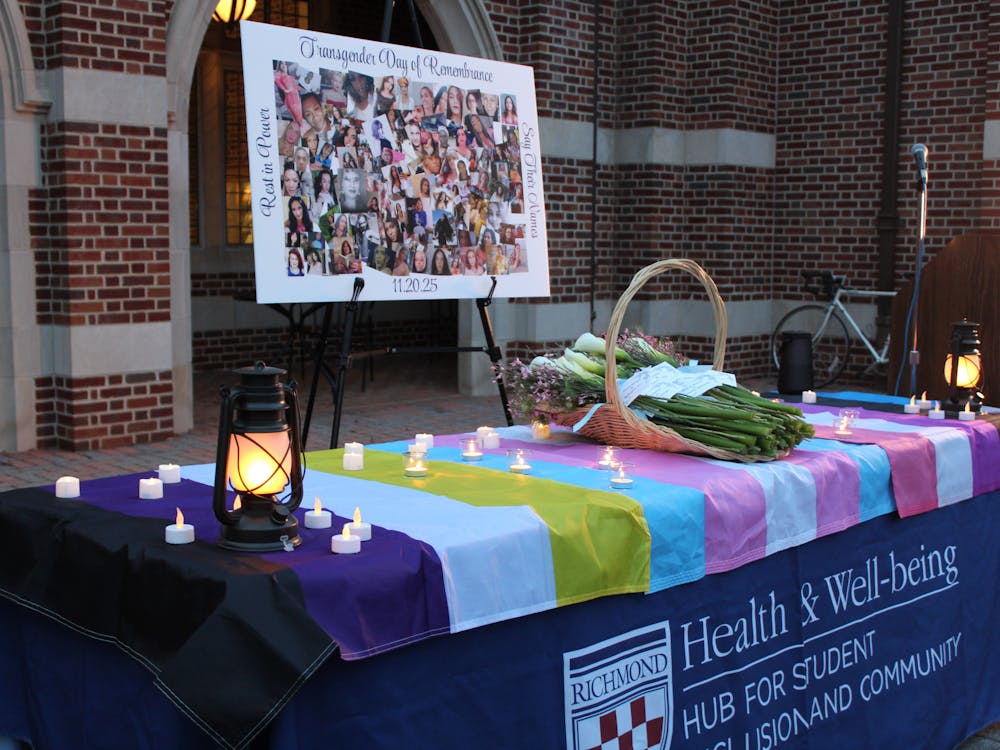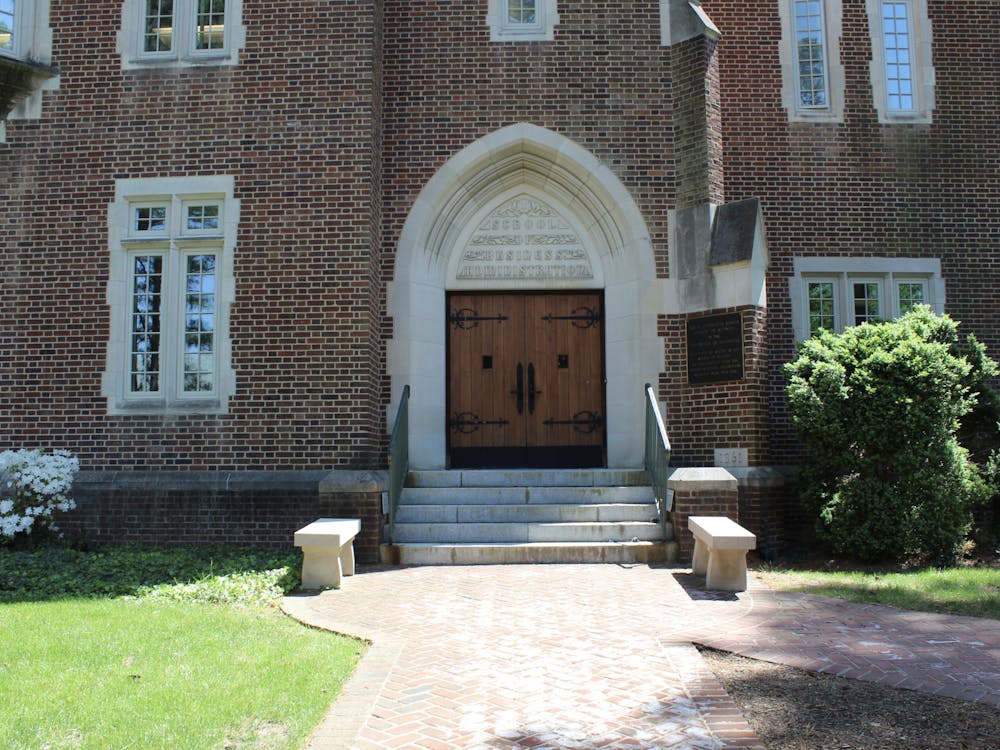Twenty years ago, on Oct. 15, 1992, X-lot was a maze of satellite trucks, work trailers, generators and media equipment strung together by miles of cable that gathered into a mass the size of a tree trunk and entered the back of the Robins Center gymnasium.
Inside, broadcast journalist Carole Simpson was moderating the first town-hall presidential debate between President George H.W. Bush and candidates Bill Clinton and Ross Perot. Today, that debate is remembered as the first time the public was given the opportunity to ask candidates questions, and as the moment President Bush was famously stumped by questions from audience member Marissa Hall Summers.
Carolyn Martin, the executive assistant to the president on campus, recalls standing in X-lot at 1a.m. as the vans filled with tech crews and equipment drove in to claim their space, filling the parking lot from the Robins Center to the baseball field.
"Even now, the hair just stands up on my neck," Martin said. "Remembering that moment--just thinking, 'This is really going to happen.'"
Martin, who has worked at the University of Richmond since 1973, was the director of university services at the time, placing her in charge of the media center for the debate.
She had gotten a hint that something was going to happen on campus in mid-August when she received a call from an electrician asking if the Robins Center could support more than 500 network connections in the gym. Martin laughed as she remembered thinking, "Well, no, but we can make it happen."
Shortly after Labor Day, Martin said the rumors had become official. "Then," she said, "We went into absolute high gear."
Robert Dillard, who was serving as the chief of campus police in 1992, remembers being especially pressed for time to organize campus security. To get an idea of where to start, he visited the chief of police for Winston-Salem, N.C., knowing that Wake Forest University had hosted a presidential debate before. In response, the chief handed him a notebook three inches thick.
Keeping the university secure with hundreds of guests, media personnel, protesters and three presidential candidates ultimately required 450 law enforcement officials, two motorcades, an emergency response team consisting of 60 state troopers, help from a contracted security company, and of course, the Secret Service. Dillard said a friend had advised him to buy a mile of yellow rope, and he had used every inch of it.
"I had no idea how big of an undertaking it was going to be," he said. "It all had to be choreographed."
To transform the Robins Center into a television studio, Martin worked with various technology providers to borrow and lend media equipment to the hundreds of media personnel on campus, she said. They used more than 20 televisions, she said, to set up the media center and multiple areas around campus where guests could watch the debate live.
"Carolyn put together an unbelievable communications system," Dillard said.
Enjoy what you're reading?
Signup for our newsletter
Likewise, Jepson Hall was transformed into a hospitality center. Ron Inlow, the food and auxiliary services director at the time, was in charge of distributing food and information to guests on campus, a challenge he shared with Martin and Dillard, who also had to feed hundreds of media personnel and law enforcement officials.
The key here, Dillard said, is that they were the hosts of the debate, and to make sure that everyone's wants and needs were met, they had to work together.
"In order to pull the event off in the little time we had, we had to knock down all the silos on campus," he said. "You didn't have time to question somebody if they asked you for help, and that's one of the best things the debate did for the university."
Both Martin and Inlow agreed.
"I think it did something for the university that was magnificent," Inlow said. "I think we're a stronger team as a result of that debate."
Students, faculty and administrators were working around the clock with people on campus they had never met before, Inlow said, and community members were eager to get involved, as well. "I don't know if that would have happened without something so enormous as a debate," he said.
But hosting this debate 20 years ago affected the University of Richmond well beyond the relationships between students and faculty on campus. Inlow emphasized that it was a phenomenal opportunity to showcase the Richmond community, and Dillard agreed.
"Even today, we are getting publicity," Dillard said. "This is the venue where President Bush looked at his watch."
Contact reporter Katie Branca at katie.branca@richmond.edu
Support independent student media
You can make a tax-deductible donation by clicking the button below, which takes you to our secure PayPal account. The page is set up to receive contributions in whatever amount you designate. We look forward to using the money we raise to further our mission of providing honest and accurate information to students, faculty, staff, alumni and others in the general public.
Donate Now


